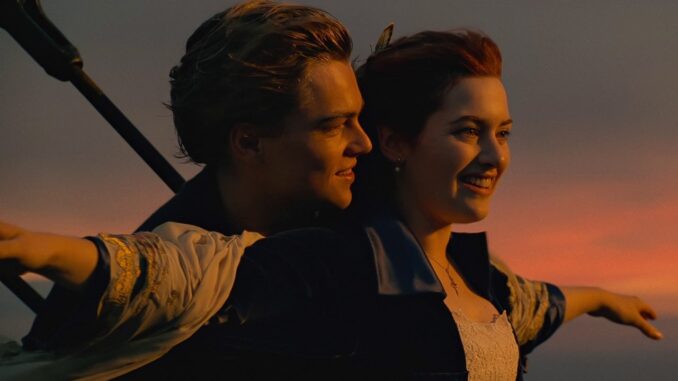
The Unsinkable Spectacle: James Cameron Reflects on Titanic and the Allure of Untapped Potential
James Cameron, a name synonymous with cinematic ambition and technological innovation, has consistently pushed the boundaries of what's possible on screen. His filmography, from the groundbreaking visual effects of Terminator 2 to the immersive world of Avatar, serves as a testament to his relentless pursuit of visual storytelling. It is, therefore, intriguing to imagine him revisiting one of his most celebrated works, Titanic, and pondering the tantalizing question: could the iconic scene of the sinking, a scene etched into the collective memory of cinema, have been even more stunning with the advancements of modern technology?
On one hand, the 1997 Titanic already stands as a monumental achievement in visual effects. The film meticulously recreated the opulent grandeur of the ship and the horrifying chaos of its demise. The scale of the sets, the masterful integration of miniature models, and the innovative use of digital compositing for its time, all contributed to a visceral and emotionally resonant experience. The pivotal scene in question, the ship breaking apart and plummeting into the icy depths, was a technical marvel. The desperate struggle of the passengers, the shifting decks, the sheer verticality of the sinking – these were rendered with a level of realism that captured the unimaginable tragedy. To suggest it could be improved might seem almost sacrilegious.
However, Cameron, ever the visionary, likely sees the potential for refinement through the lens of contemporary tools. Imagine, for example, the improvements possible with advanced fluid dynamics simulations. The swirling vortexes, the rushing torrents of water overwhelming the lower decks, the very way the ship groans and fractures under the immense pressure – all of these elements could be rendered with a level of detail and realism that was simply unattainable in the late 90s. We could witness the microscopic interactions of water and steel, the subtle shifts in debris and bodies as they are swept away, adding layers of verisimilitude that further heighten the sense of immersion and horror.
Furthermore, the power of modern CGI allows for more seamless integration of digital and practical effects. In 1997, the seams were often visible, requiring clever editing and camera angles to mask the transitions. Today, these transitions could be virtually invisible, creating a truly photorealistic spectacle. The digital actors, for instance, could be more convincingly rendered, their faces exhibiting the nuanced expressions of fear, panic, and resignation with unparalleled accuracy. This enhanced realism would only amplify the emotional impact of the scene, making the individual tragedies feel even more intimate and heartbreaking.
Beyond the technical aspects, modern technology could also enhance the artistic vision. Imagine Cameron utilizing advanced lighting techniques to capture the ethereal glow of the moon reflecting off the icy water, or employing sophisticated color grading to evoke the chilling, hypothermic atmosphere. The subtle nuances of light and color could be used to amplify the emotional undercurrents of the scene, creating a more profound and unsettling experience.
Yet, this reflection also carries a degree of bittersweetness. The constraints of the past, the limitations of the technology, often force creativity to flourish in unexpected ways. Perhaps it was those very limitations that compelled Cameron and his team to find innovative solutions, to push the boundaries of what was possible, and to ultimately create a scene that resonates so deeply with audiences. Moreover, there is an argument to be made that excessive reliance on cutting-edge technology can sometimes detract from the human element of a story. The danger lies in prioritizing spectacle over substance, in losing sight of the characters and their emotional journeys amidst the dazzling visuals.
Ultimately, James Cameron's hypothetical musings on a technologically enhanced Titanic sinking scene are not about diminishing the accomplishments of the original. Rather, they are about exploring the boundless potential of filmmaking and the enduring pursuit of visual storytelling. It is a testament to his restless spirit, his unwavering dedication to pushing the limits of the medium, and his deep understanding of the power of cinema to transport audiences to other worlds and evoke profound emotions. While the original Titanic remains a masterpiece, a benchmark of filmmaking excellence, the possibility of enhancing its iconic scene with modern technology serves as a tantalizing reminder of the ever-evolving landscape of cinematic artistry and the enduring quest to create the unsinkable spectacle. The allure of untapped potential, the dream of bringing even more visceral realism and emotional depth to the screen, is a siren song that continues to beckon James Cameron, and indeed, all filmmakers, to push the boundaries of what's possible.
